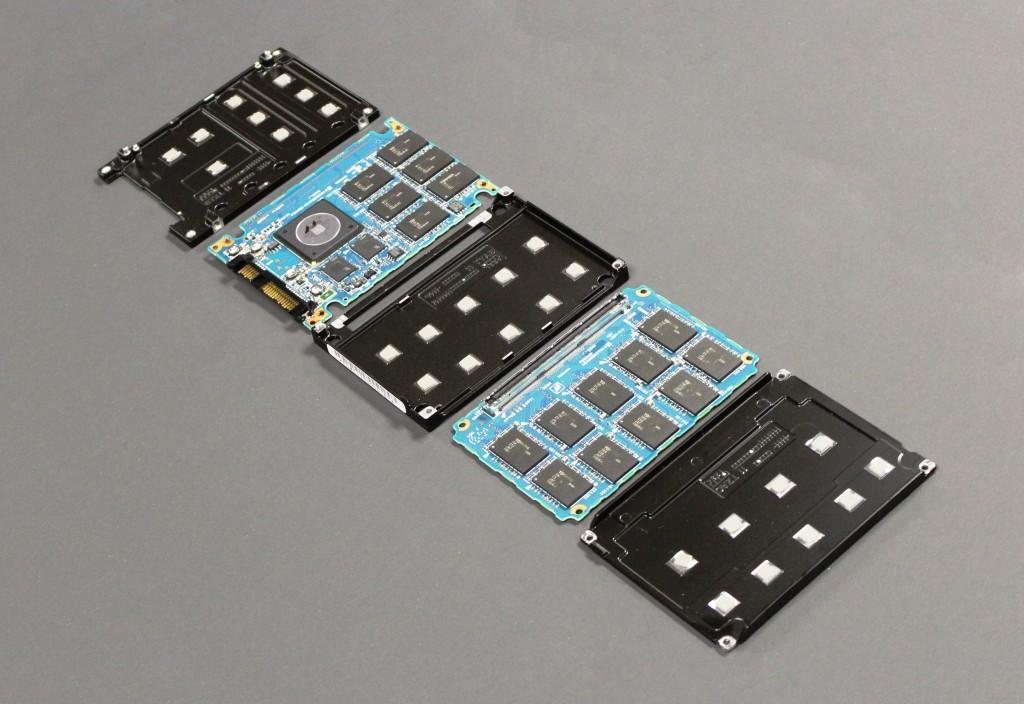F.O.B., STEADY STATE, AND OVER PROVISIONING
A key focus of this review will be the difference between the various states of this enterprise SSD when it is being used. All NAND based flash devices suffer performance degradation over time and, in layman terms, the more you use an SSD, the slower it gets.
An SSD that is brand new will function at the top level of performance, and this is referred to as Fresh Out of Box (FOB) condition. There are many things that SSDs do in the background to lessen the impact of the performance loss, and these work exceedingly well in consumer devices, as they have a key ingredient known as idle time.
Idle time allows the device to recover and the processor inside the SSD to do various tasks that will facilitate a return, at least partially, of high performance levels. Regardless of the steps taken by the SSD, there will not be a return to FOB condition without a Secure Erase, and even that is only temporary.
Enterprise SSDs do not function with this luxury of idle time. SSDs are a premium tier of data storage in the enterprise space, and thus must be used fully to realize the cost per IOPS performance advantage. This class of device is designed to handle this reality with several different methods. The Toshiba MKx001GRZB series, for instance, only performs its Garbage Collection during periods in which it is already writing. While normal consumer devices rely upon idle time to clean up, this device actually requires busy time to optimize.
 With one SSD effectively replacing multiple HDDs in the data center, not utilizing the device at its fullest potential would essentially be wasting it. Many SSDs are being pushed into service to complement large HDD-based arrays. When used in tiering and caching scenarios, these SSDs have the ‘hottest’ data on the HDD arrays moved onto them, and then served from the SSD. This results in very heavy usage loadings that are not conducive to idle periods of time. The SSD must do all that it can do to handle the load on-the-fly. Over time this will result in reduced performance.
With one SSD effectively replacing multiple HDDs in the data center, not utilizing the device at its fullest potential would essentially be wasting it. Many SSDs are being pushed into service to complement large HDD-based arrays. When used in tiering and caching scenarios, these SSDs have the ‘hottest’ data on the HDD arrays moved onto them, and then served from the SSD. This results in very heavy usage loadings that are not conducive to idle periods of time. The SSD must do all that it can do to handle the load on-the-fly. Over time this will result in reduced performance.
This leads to what is referred to as Steady State performance. Steady State performance results from the device being used to its fullest and settling into a state where there is no longer any variability in performance. Enterprise SSDs are designed specifically to function very well in Steady State.
Another enemy of high performance is the amount of data that is contained on the SSD. SSDs will perform differently depending upon the amount of data that is contained on the device. With high fill levels the overall performance will go down, and this is another reality that enterprise SSDs have to deal with. These devices are commonly deployed with 100% of the addressable space utilized. They are literally filled to the brim with data.
There is a method of combating this eventuality, at the price of some capacity. Since a higher fill level creates lower performance, simply leaving some of the drive space unused will allow for higher speeds! This is referred to as over provisioning and this is already done on every single SSD that is manufactured. There is a section of NAND that is not usable by the consumer, and this space allows the SSD to handle its internal housekeeping functions. Enterprise SSDs have a large amount of over provisioning as a rule. This SSD that we are testing today actually has 512GB of NAND on the device, but only 400GB is user addressable. By expanding upon that amount of over provisioning, leaving some extra un-partitioned capacity, great gains in both performance and the endurance of the SSD can be realized.
We will be comparing the performance of the SSD with FOB, Steady State, and a 20% over provisioned standpoint.
 The SSD Review The Worlds Dedicated SSD Education and Review Resource |
The SSD Review The Worlds Dedicated SSD Education and Review Resource | 

Thanks for the detailed report. Can you compare/contrast this with the OWC enterprise drive, which is 1700 vs 6000 for the Toshiba. Is it worth 3 times the price? I do see the attention they paid to heat and don’t know if OWC has done the same homework, but the OWC drive does use an enterprise SandForce chip which should have the same features as the Marvell.
Awaiting arrival of the OWC SSD.
I guess the price difference is SLC vs eMLC, (correct me if I’m wrong) and their additional work on putting it together really well in terms of the heat dissipation. But in real terms I guess this comes down to longevity? It would be very interesting if you could do some applied but theoretical analysis of longevity comparisons. For example, if serving a database or web server with x writes and y reads per day how long would each last? I think the SLC is in the millions so that can be counted on for 5 yrs+ but the question is, with the features of the enterprise SF chip, what life can be expected there? The speed should be comparable, maybe with a slight bump for this drive in IOPS.